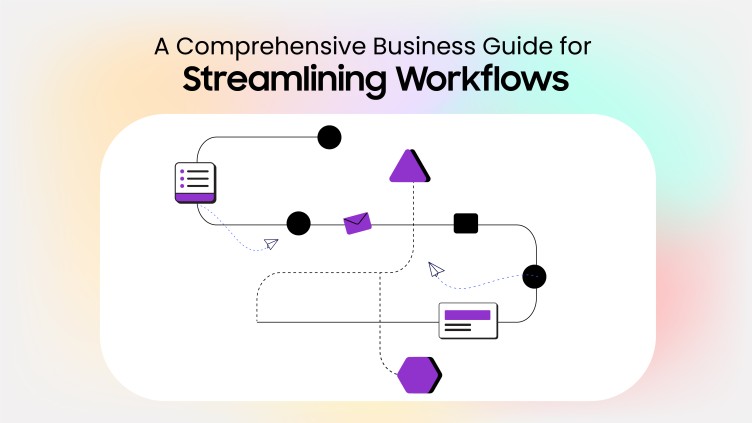A Comprehensive Business Guide for Streamlining Workflows
Workflow optimization necessitates a thorough grasp of an organization’s operations and a commitment to ongoing improvement. It begins with a detailed study of existing processes, finding inefficiencies and potential for change so that organizations may make educated decisions, prioritize their efforts, and execute focused improvements.
The advantages of workflow optimization go beyond immediate productivity improvements. Well-optimized processes empower staff by setting clear objectives and eliminating misunderstandings that enhance work satisfaction, morale, and higher retention rates, all contributing to improved productivity. Optimized workflows enable businesses to remain agile and responsive in a constantly changing environment. As industries evolve and face new challenges, a well-structured and efficient workflow is the foundation for innovation and adaptability, allowing organizations to maintain a competitive edge in their respective markets.
Streamlining focuses on critical components, such as process mapping, simplification, standardization, automation, integration, continuous improvement, and performance monitoring. This article will delve into each component, providing a comprehensive guide for organizations looking to streamline their workflows.
Process Mapping: Laying the Foundation for Workflow Optimization Process mapping involves visualizing workflows to identify each process’s steps, tasks, and responsibilities. By clearly representing the workflow, businesses can uncover inefficiencies, redundancies, and gaps in their existing processes. Process maps serve as valuable tools for identifying areas that need improvement and can facilitate better communication among team members.
Simplification: Enhancing Efficiency by Reducing Complexity Simplification focuses on assessing processes to eliminate unnecessary steps or tasks that do not add value. By reducing complexity, businesses can speed up task completion, minimize errors, and create a more focused and efficient work environment. Embracing simplification can lead to significant improvements in overall productivity.
Standardization: Promoting Consistency Across the Organization Standardization involves developing consistent methods and procedures for organizational tasks and processes. The benefits of standardization include making it easier for employees to adopt guidelines, reducing the risk of misunderstandings or mistakes, and promoting a culture of consistency. This culture can contribute to improved overall efficiency and productivity.
Automation: Leveraging Technology for Greater Efficiency Automation involves implementing technology solutions to handle repetitive or manual tasks. Automating these tasks allows employees to focus on higher-value activities while technology manages routine work. This approach can significantly improve overall efficiency. Businesses should explore popular automation tools and technologies to identify the best solutions for enhancing their operations.
Integration: Facilitating Seamless Collaboration Across Tools, Systems, and Departments Integration is essential within an organization, as it connects various tools, systems, and departments, enabling them to share information and work together more effectively. Businesses can support streamlined workflows by reducing communication barriers, promoting more effective collaboration, and ensuring that all teams work towards shared goals.
Continuous Improvement: Cultivating a Mindset of Ongoing Optimization Continuous improvement involves regularly reviewing and assessing workflows to pinpoint areas for further improvement. Businesses should seek feedback from employees and stakeholders to guide their optimization efforts, ensuring that the needs of all parties are considered. Embracing continuous improvement helps maintain a competitive edge in the business landscape and promotes a culture of innovation and growth.
Performance Monitoring: Measuring the Success of Streamlined Workflows Performance monitoring is a crucial aspect of streamlining workflows, as it involves utilizing key performance indicators (KPIs) and metrics to gauge the effectiveness of the implemented changes. Businesses can continue to enhance their workflows, maintain efficiency, and drive growth by making data-driven decisions based on performance monitoring results.
Organizations can enhance their operations by understanding and implementing the key components of streamlined workflows, increasing efficiency, productivity, and overall business success. Adopting process mapping, simplification, standardization, automation, integration, continuous improvement, and performance monitoring will create a more effective work environment, benefiting employees, stakeholders, and the business as a whole.



